Iranian Traditional Houses
Are you tired of staying at the same old luxurious hotels during your travels?
Why not switch things up and stay at an old traditional house in Iran instead? These awe-inspiring structures not only showcase the ingenuity of Persian architecture but also offer a glimpse into the daily lives of locals. From the eco-friendly designs that kept the houses warm in the winter and cool in the summer to the intricate plasterwork, mirrorwork, and paintings that symbolize Persian concepts, these houses truly reflect the country's culture.
But traditional houses in Iran are more than just buildings; they are a piece of history that tells the story of a bygone era. And the best part? You can experience it all by staying in one of the traditional houses. In this blog, we'll take you through ancient Persian houses' stunning elements and features and introduce you to well-known traditional houses that are a must-visit on your trip to Iran.
Elements of a Traditional Iranian House

Traditional Persian houses boast a mesmerizing design that leaves a lasting impression on anyone who lays eyes on them.
From the stunning central courtyard, which serves as the heart of the house, to the intricate tilework that adorns the walls, floors, and ceilings, every part of the house is a masterpiece in its own right.
The traditional Persian house design also incorporates unique features such as windcatchers (badgirs) and verandas, which provide natural ventilation and cooling. Here we will delve into the fascinating world of traditional Persian houses and discover the secret elements behind their enduring appeal.
Door Knockers
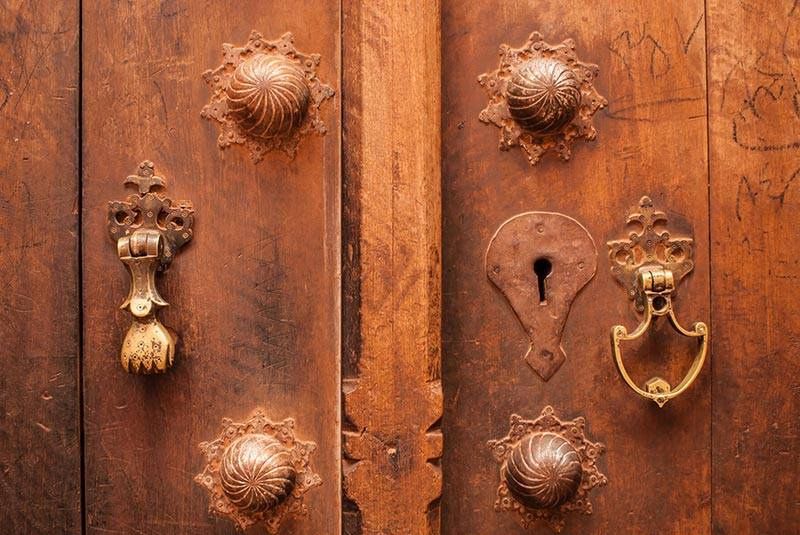
When entering a traditional Persian house, you are immediately struck by the attention to detail at the entrance—the wooden door adorned with intricate Iranian patterns and two iron-made door knockers on each side of the door.
The ring-shaped knocker or "Koobeh" on the right side of the door has a softer sound, while the heavier door knocker on the left has a bass sound. These differences are not just for aesthetics but also have a practical purpose. They are designed based on gender segmentation, which is an essential aspect of Islamic culture in Iran.
When a female guest arrived, she had to knock on the ring-shaped "Koobeh," while men used the left door knocker. This way, the host understood whether the guest was a man or a woman and knew how they should behave.
| Read more: Elements of Persian Architecture
Sar Dar (Façade)
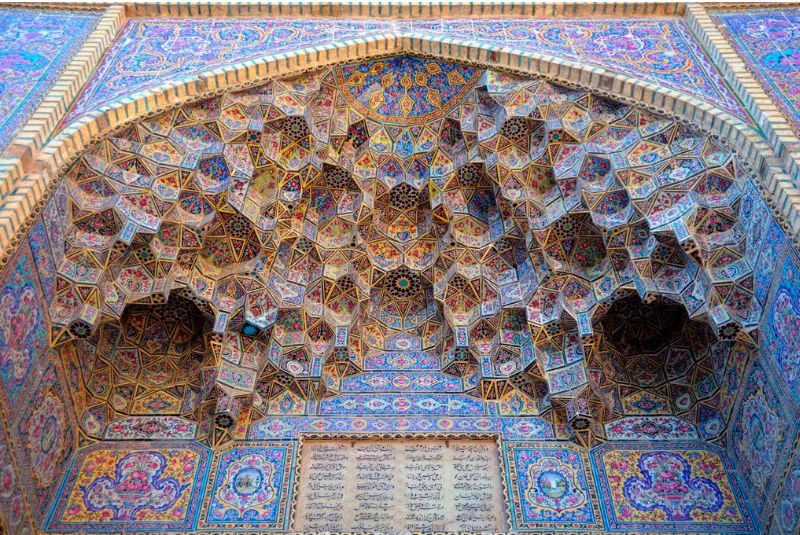
Sar Dar in Farsi means above the door, which tells you that it is an art piece above the door, often decorated with different styles and designs. The most popular ones include tile works, calligraphies of Saadi and Hafiz poems, or some lines from the Quran, the official book of Islam.
In some parts of Iran, people even put bitter orange leaves above the Sar Dar, believing they have blessed their homes. Bitter orange leaves are known for their sweet aroma, and by placing them above the Sar Dar, they help to purify the air and create a refreshing atmosphere.
Sakoo (Sitting Area)
At the entrance of traditional Iranian houses, you may find two platforms or sitting areas called Sakoo. These platforms are designed to allow the passengers to sit briefly and rest before continuing.
The Sakoo is also a place for good conversation. When a guest arrived at the door but did not want to enter the house, these sitting areas were perfect for a good conversation without making the guest and the hosts tired of standing for minutes.
Hashti (Arctic Entry)
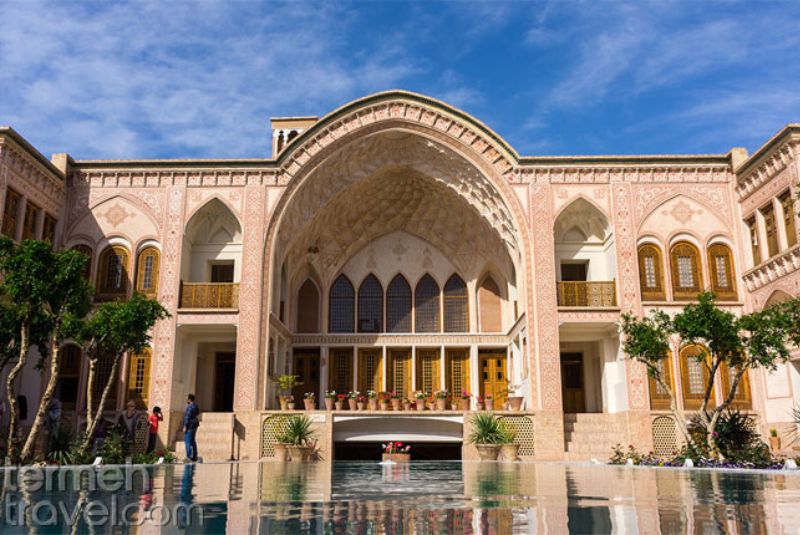
The Hashti is a covered area that links the inside of the house and all its parts, such as the yard, rooms, kitchen, and bath, to the entrance section. It is like a crossroads that lead to different parts of the house, and it helps visitors to navigate the house easily.
Furthermore, the Hashti was used as a waiting area for visitors unknown to the host. These visitors had to stay and wait in Hashti for the host's permission to fully enter the house's main area.
| Discover: Isfahan Mosques You Should Visit
Corridor (Dalan)
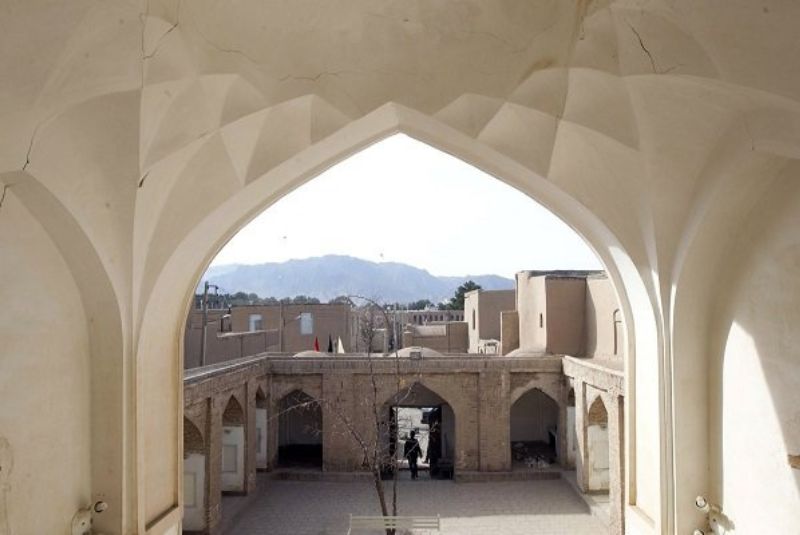
Walking through the Hashti, you enter the Dalan, a narrow, gorgeous corridor leading to the yard. Interestingly, Iranians used to hang a clay-made pitcher from the Dalan's wall, designed to keep the house cool during the hot summer months and keep the water inside of them cold, so guests can have some cool water if they don't want to enter the house.
| Immerse yourself in Persian rich Art: Persian Art
Veranda

The Veranda is located in the outer part of the house and is usually higher than the surrounding area. The use of Veranda in Persian architecture dates back to the Parthian era and has played the role of a residence for people in the house.
The Veranda is typically bounded on three sides by the building and is open to the courtyard on the other side. It is designed to provide shade and protection from the sun during hot summer days.
Yard (Hayat)

The Yard, or the Hayat, is undoubtedly one of traditional Persian houses' most beautiful and enchanting parts. As you step inside a Persian yard, you are greeted with a stunning sight of different types of trees and flowers surrounding a gorgeous blue pool.
If you pay more attention, you will find red goldfish swimming inside the pool and enjoying the shade of trees. The presence of goldfish helps to keep the pool clean and free from insects.
The Takht, or sitting areas decorated with beautiful cushions and carpets you find in the yard, create a cozy atmosphere for having afternoon tea.
Sunken courtyards
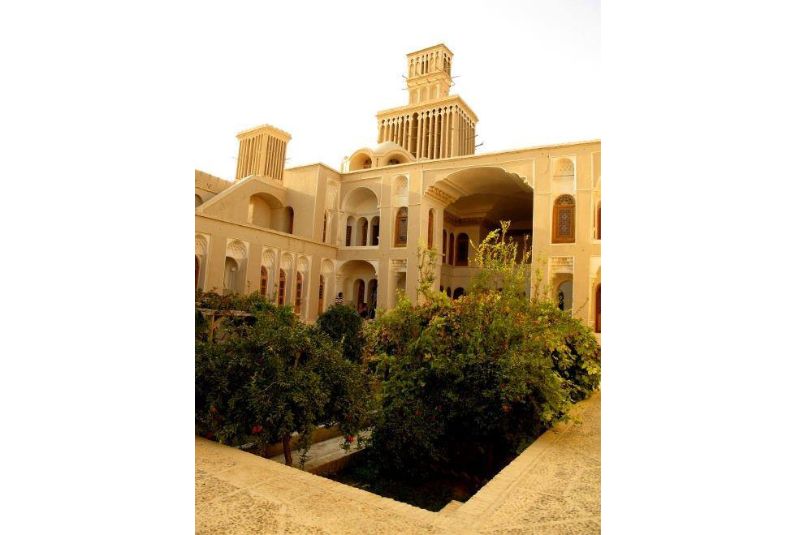
In some traditional houses in Kashan and Nain, you will find a garden below the ground level, creating a recessed area that is both beautiful and practical.
One of the main reasons for creating a sunken courtyard was to access the water of the "qanat," or aqueduct. By building the courtyard below ground level, homeowners could access the water more easily and efficiently, especially in arid and desert climates where water was scarce.
Beyond its functional purpose, the sunken courtyard also adds to the beauty and charm of traditional Persian houses. The gardens and greenery in the recessed area provide a peaceful and serene atmosphere, while the surrounding walls offer privacy and seclusion.
Shahneshin/Talaar (hall)
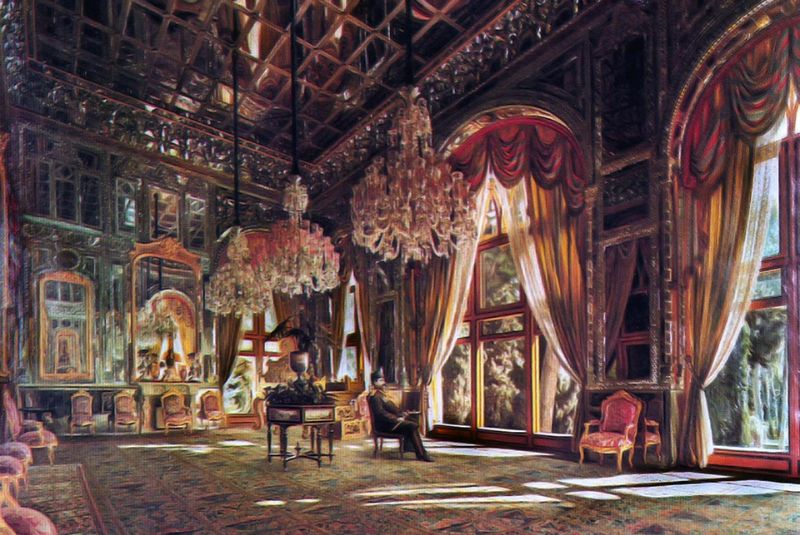
If you are lucky enough to visit Iran and be invited to one of the traditional Iranian houses, the host will most likely ask you to sit and rest in the Shahneshin.
In Persian, this word means "Where the king sits," and it is reserved for the most important guests. The Shahneshin is usually the biggest and nicest room in the house and is typically decorated with beautiful carpets, cushions, and other luxurious items. Sitting in the Shahneshin, you can rest on a gorgeous backrest adorned with lovely Persian patterns and look at the yard through colorful windows.
Windows
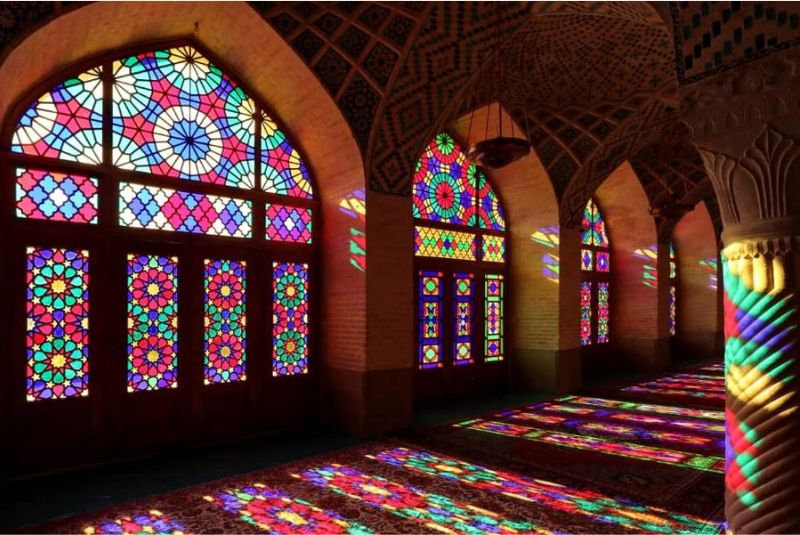
Although the windows in traditional Iranian houses are typically adorned with colorful glass and beautiful curtains, the most remarkable point about them is how they are strategically placed to allow for natural light to enter the house and create a warm and welcoming atmosphere.
In addition, traditional Persian houses in the central and southern parts of Iran typically have no windows facing alleys and public places. This unique feature is designed to preserve the house from dust and sand storms and keep the house away from all the noise and sounds from the outside.
Matbakh (Kitchen)
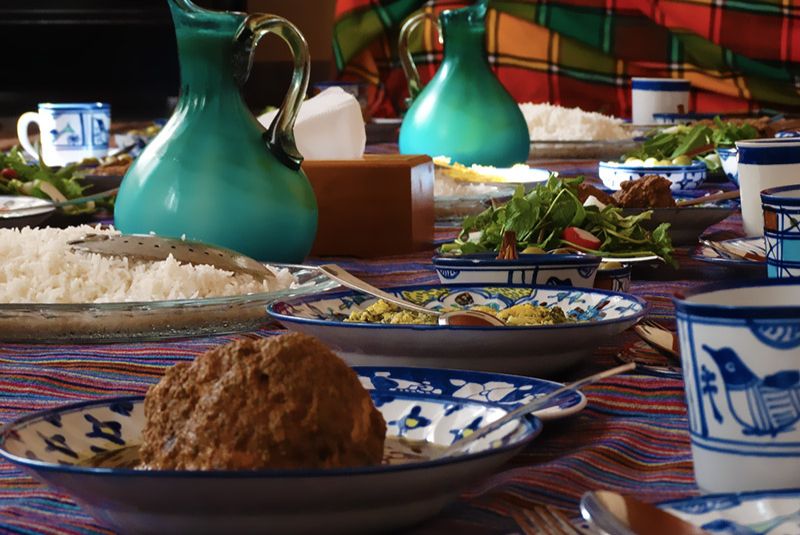
The Matbakh, or kitchen, is decorated with beautiful colors and patterns that add to the overall beauty of the house. The walls are adorned with dried herbs, such as mint, basil, and thyme, which are not only for decoration but also used in Persian cuisine.
Next to the herbs, you can find beautiful garlic gloves and peppers that add to the aroma of the kitchen. Going deeper into the kitchen, you can find the armoire full of lemon juice, verjuice, pickles, and jams stored there for the rest of the year.
Abrizgah (Bathroom)
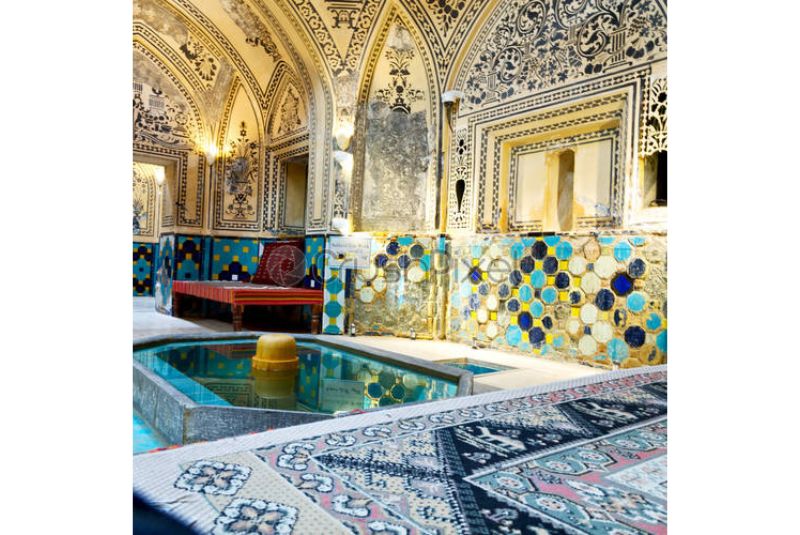
The Abrizgah, or bathroom, is typically located at the lowest part of the building, which makes accessing water easier for the household.
Another fascinating thing about the Abrizgah is the tank with a fireplace beneath it which was used to provide warm water during the cold winter months. The household could boil the water by lighting the fire and use it in the Garmabeh or bath.
Windcatcher
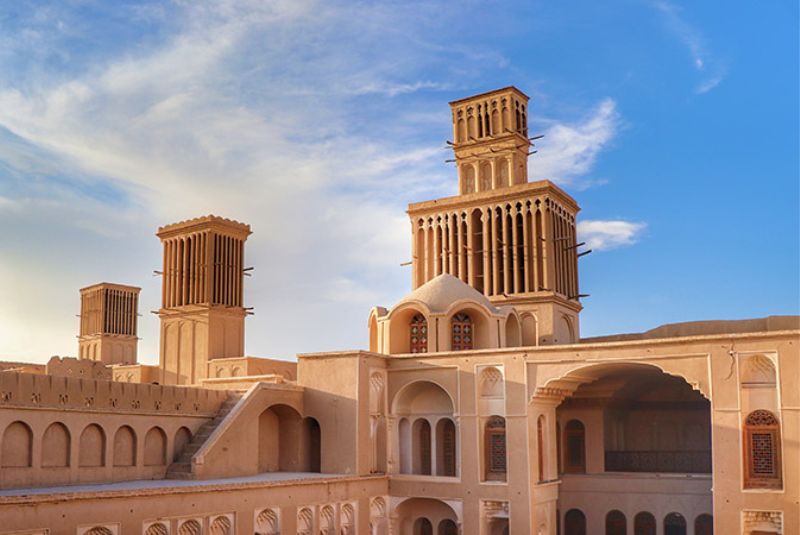
The Windcatcher is crucial in traditional Persian architecture and functions as a natural ventilation system. It is a masterful construction that captures the wind and directs it into the house to cool the interior during hot summer days.
The Windcatcher is usually built on the roofs of houses and reservoirs and is made of short and long rectangular shafts with openings in their walls. The walls inside the Windcatcher are made of clay or a combination of clay and wood. The clay walls help to regulate the temperature inside the house by absorbing the heat during the day and releasing it at night.
Cistern
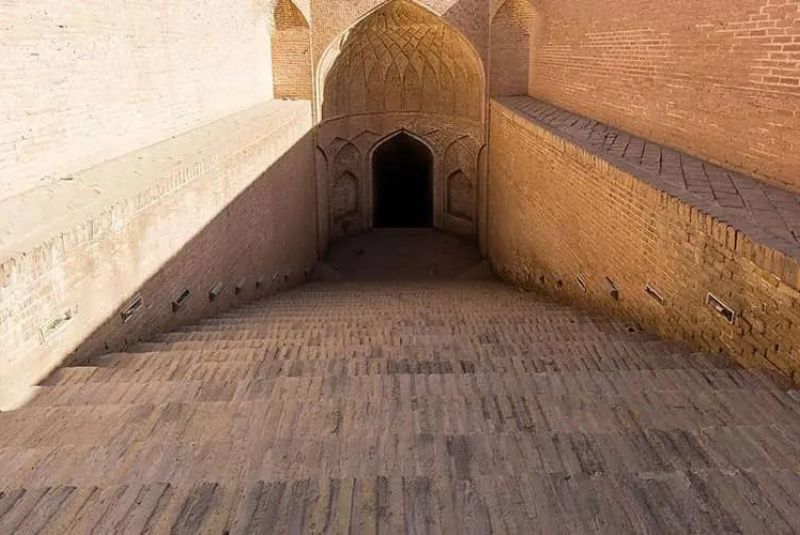
The Cistern, also known as a reservoir, is typically built in the house's basement and made of stone or brick, and the floors are made of clay or concrete. The Cistern is especially important in desert areas where water is scarce as it is made in a way that allows rainwater and seasonal streams to supply it with water.
Summer Section
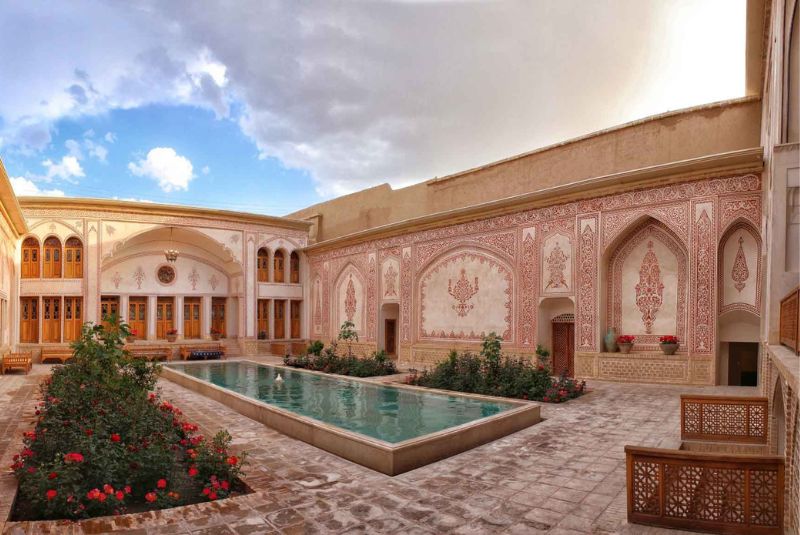
The summer section provides a unique solution to the challenges of living in a hot and arid climate. This section is mostly located on the south side of the house, and one of the key features of the summer section is its orientation. Because the sun is at its highest and hottest in the south, the architects would position the summer section on the north side of the building. This ensured no direct sunlight was on the space, keeping it cool and comfortable even on the hottest days of the year.
Winter Section
On the other hand, the winter section is on the north side of the house, as this side benefits from the sunshine during the winter months.
Famous Traditional Houses in Iran
If you are interested in experiencing the charm of traditional Persian houses, below are some famous ancient buildings you must see. And the best part? You can even live in some of these historic houses during your stay in Iran and experience the magic of Persian architecture firsthand.
Darb-e Bagh
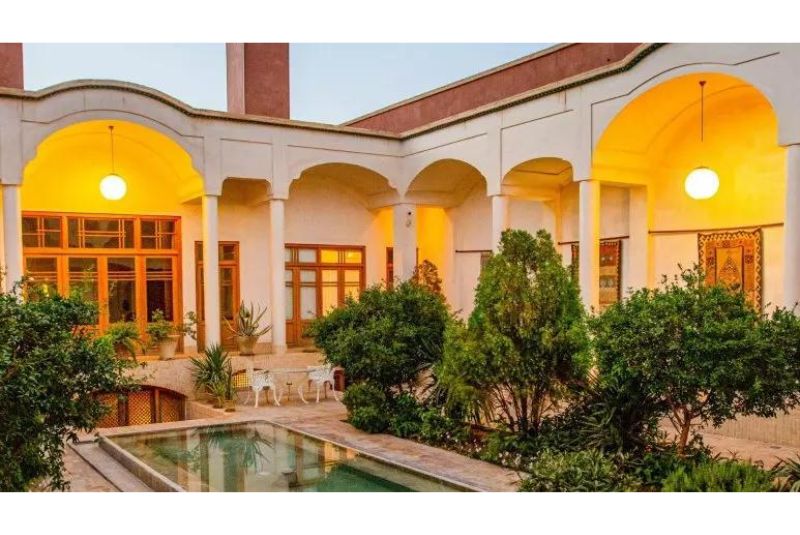
If you plan a trip to Iran, add the ancient city of Kashan to your itinerary. This city is home to some of the most alluring architectural wonders in the country, many of which have been recognized by UNESCO. But what sets Kashan apart from other destinations is its traditional hotels, which offer a unique glimpse into Iran's rich cultural heritage.
One of the most fascinating guesthouses in Kashan is the Darb-e Bagh. This traditional house was built around 100 years ago as the residence of Haj Agha Doroodgar and has since been lovingly restored and converted into a stunning hotel.
The hotel rooms at Darb-e Bagh offer a range of features to suit every traveler's needs. There are single and double rooms with private bathrooms and a spectacular suite with its own living room, bedrooms, and dining room with breathtaking views. The rooms are impeccably clean and comfortable, ensuring a relaxing and enjoyable stay.
Narenjestan Traditional House
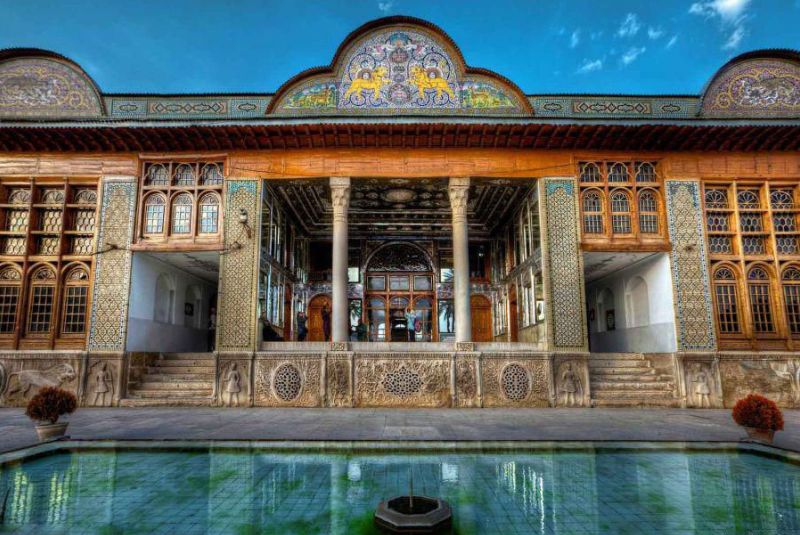
If you want to add a unique and unforgettable destination to your travel list, consider visiting the UNESCO World Heritage city of Yazd. This city, situated between the Dasht-e Kavir and Dasht-e Lut deserts, offers an opportunity to step back in time with its stunning mud-brick houses and wind towers that date back centuries.
But the excitement doesn't stop there. For an even more immersive experience, you can stay in the Narenjestan historic house, a lively and welcoming traditional house embodying Persian hospitality. The hosts at Narenjestan go above and beyond to ensure their guests feel right at home, with surprises and treats throughout their stay.
The house is also kid-friendly, with children under five staying for free and plenty of amenities to make your stay comfortable and enjoyable. Each room has air conditioning, a TV, and an indoor fridge, and daily maid service keeps everything tidy.
Narenjestan also has a stunning green yard, which provides a beautiful backdrop for enjoying your meals or simply relaxing in the shade.
Darb-e Shazdeh Boutique Hotel
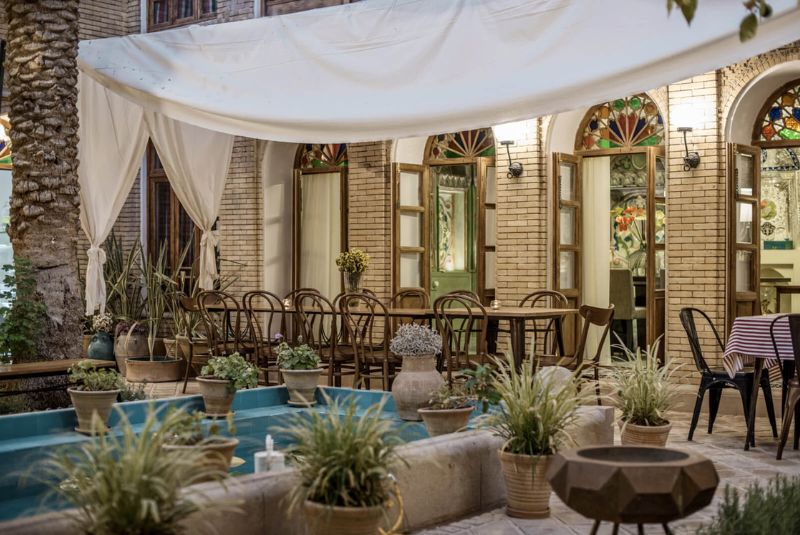
This charming hotel will surely capture your heart with its distinctive style. Unlike many other Shiraz hotels, Darb-e Shazdeh offers an entirely different experience that is hard to find in other accommodations.
The hotel comprises nine rooms, each with its unique style and mood. All rooms overlook a beautiful inner courtyard, which is the hotel's heart.
Of course, like any top-tier hotel, each room has private bathrooms and showers, concierge services, and 24-hour hotel reception.
The hotel's location is also a major draw for travelers. While many Shiraz hotels are located in various districts throughout the city, Darb-e Shazdeh is as near as it gets to the famous Zand royal district and the Arg of Karimkhan. This makes it the perfect choice for travelers who want to explore the city's rich cultural heritage and historical landmarks.
Ghavam House
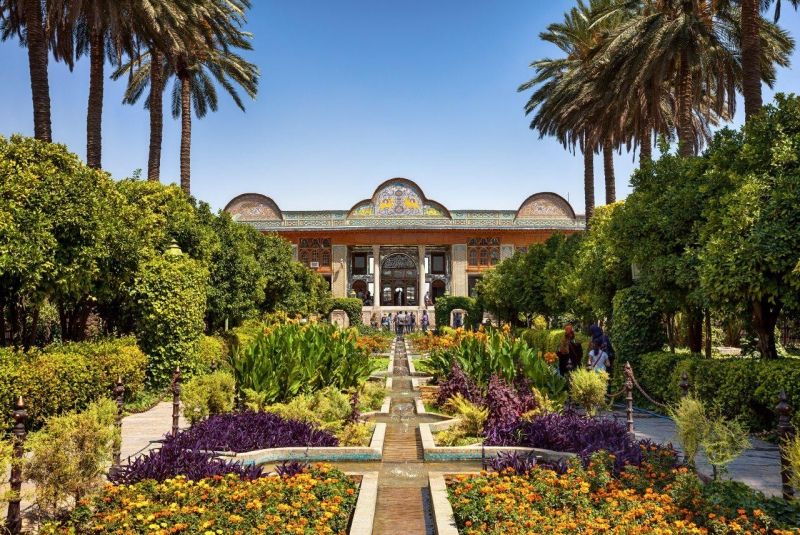
This stunning mansion was once owned by the ruler of Fars, Ghavam-ol Molk, who built it for himself in a beautiful garden filled with the famous bitter orange trees of Shiraz.
As you stroll through the fragrant garden, you'll be greeted by the sweet aroma of the orange blossoms, and your eyes will be drawn to the symmetrical building ahead of you. The traditional patterns on the colorful walls and windows of Ghavam create a playful, harmonious, and adorable atmosphere.
But the real magic happens when you enter the building and discover its elegant interior. From the intricate details of the ceiling to the ornate designs on the walls, every inch of this place exudes beauty and sophistication.
Atigh Traditional Hotel

Isfahan, also known as the "half of the world", is the most popular city in Iran, and for a good reason. With its rich history and stunning architecture from different eras, this incredible destination has no shortage of things to see and do. And what better way to experience Isfahan than staying in one of the city's greatest historical hotels?
Atigh traditional hotel, built in the Qajar era over two hundred years ago, is a true gem in the heart of Isfahan. Each room at Atigh Hotel has its own unique name and traditional architecture, providing profound comfort for guests. From the Qajar suite to the Qajar room and the Khatereh room, every detail has been thoughtfully considered to ensure a relaxing and enjoyable stay.
Lastly, it's worth noting that the hotel's building structure was registered with the National Heritage Organization of Iran in 2002.
Abbasi Hotel
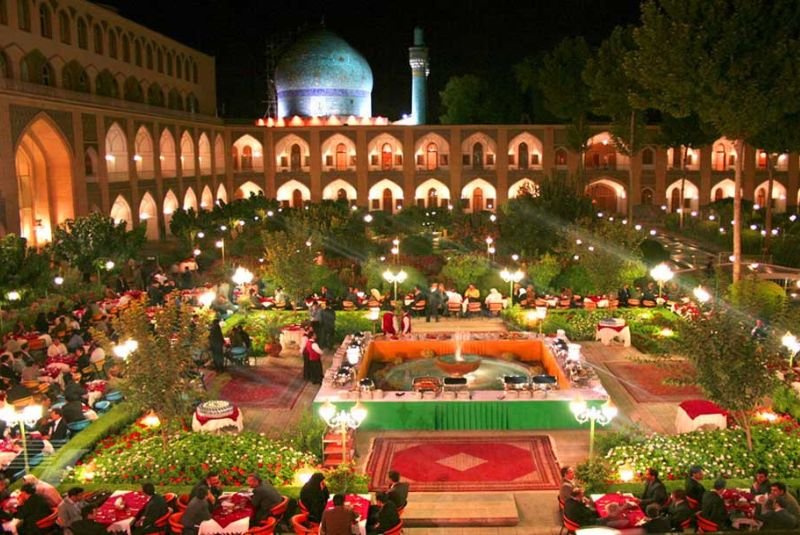
If you want a truly luxurious, traditional hotel experience in Isfahan, the Abbasi Hotel is the perfect choice. As the biggest hotel in Isfahan with a 300-year-old history, the Abbasi Hotel is known as "the world's most beautiful hotel".
The hotel features 225 rooms, special suites, and two and three-bedroom apartments. It also features magnificent restaurants, a traditional dining room, a coffee shop, a gym, a pool, a sauna, and massage services. And let's not forget that the "Persian Garden" is a particular standout, offering a spectacular view for enjoying a cup of tea and taking in the stunning scenery.
Laleh Kandovan hotel
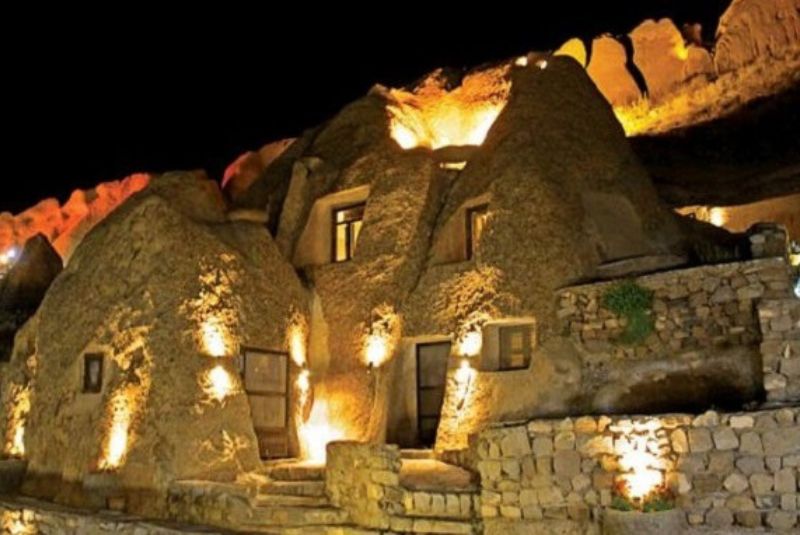
If you're planning a visit to Tabriz, don't miss out on the chance to explore the touristic village of Kandovan. This astonishing village is located in the Sabalan mountains. It is famous for being the only inhabited rocky village in the world.
And when it comes to accommodations in Kandovan, there's no better choice than the Laleh Kandovan Hotel. This distinctive hotel is considered one of the world's three rocky hotels.
Staying at the Laleh Hotel is an opportunity to live like a caveman but with all the luxuries and amenities of a five-star hotel. While this hotel has no elevator, you'll find that the amenities are plentiful, including TV, Wi-Fi, a tea maker, and a refrigerator. And if you're looking for traditional Iranian cuisine, the hotel's tea house and café will welcome you with delicious dishes.
Shahbaz Hotel
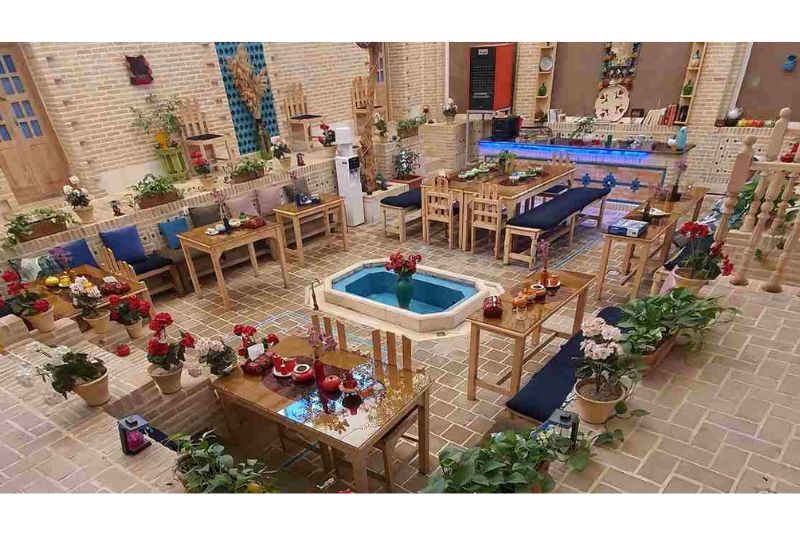
If you're searching for the best traditional hotel in Kerman, look no further than the Shahbaz Hotel. While it may be lower-class than other accommodations in the area, the Shahbaz Hotel is neat, friendly, and with excellent facilities to meet all your needs. From Wi-Fi to 24-hour hotel reception and concierge services, the Shahbaz Hotel has everything you need for a comfortable and enjoyable stay.
Sarabi Shushtar hotel
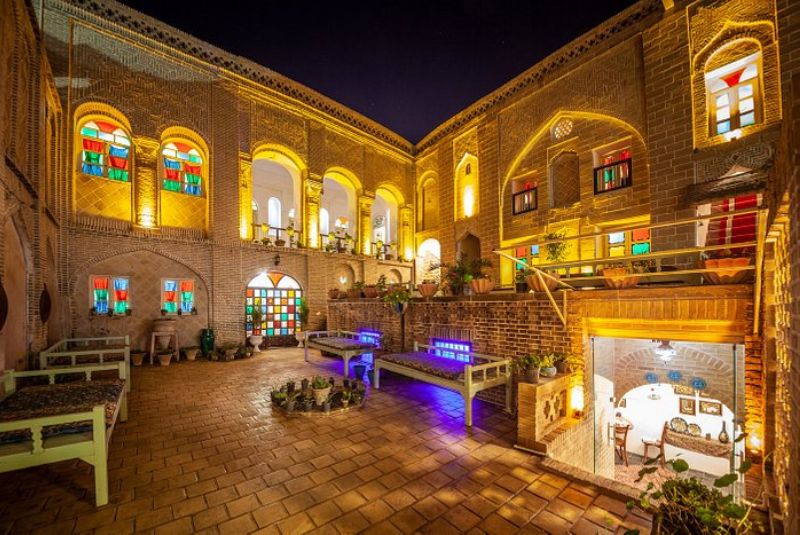
Shushtar is a hidden gem in Iran's Khuzestan province, approximately 92 kilometers from Ahvaz. This stunning city is famous for its Historical Hydraulic System, which is considered a masterpiece of creative genius.
The Sarabi Hotel is a 210-year-old building that dates back to the Qajar era, offering guests an opportunity to experience Iran's rich history and culture uniquely.
The Sarabi Hotel is composed of a beautiful yard, garden, pool, three porches, and 15 rooms, providing ample space for guests to relax and unwind in the hotel's peaceful and serene surroundings. One of the most interesting features of the Sarabi Hotel is its dark brown door with two separate doorknockers, one used by women and the other used by men.
Arian Hostel
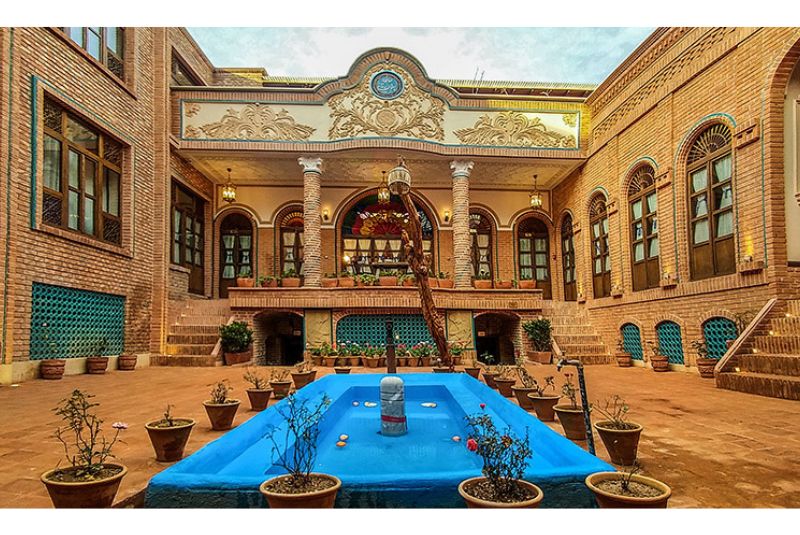
While Tehran may be known for its modern and bustling atmosphere, it's also home to hidden gems like the Arian Hostel. This charming hostel offers a friendly and relaxed environment where guests can enjoy a taste of traditional Iranian houses at an affordable price.
The Arian Hostel features a range of suites and family rooms beautifully adorned in traditional Iranian style. The ambiance is neat and welcoming, making it the perfect place to relax after exploring the city.
Despite being located in one of the noisiest areas of the city near the Grand Bazaar and Golestan Palace, the Arian Hostel is a peaceful and quiet oasis inside.
Aghazadeh boutique hotel
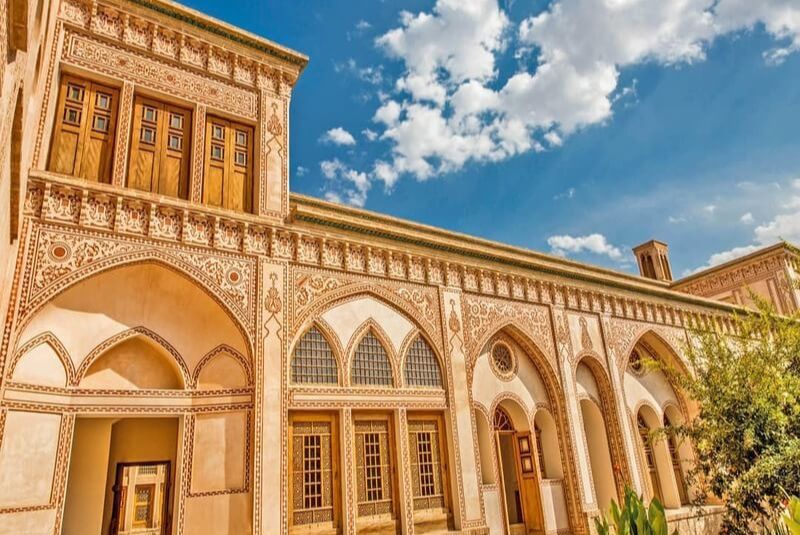
This stunning traditional hotel is located in the heart of Abarkuh, known for its ancient landmarks such as Gonbad-e Ali, Sarv-e Abarkuh, and Jame Mosque.
The Aghazadeh Boutique Hotel is a Qajar house with a two-story wind tower and four adjacent traditional houses. The hotel offers a double bed suite and six double rooms.
And when it comes to amenities, the Aghazadeh Boutique Hotel has everything you need to make your stay as comfortable and enjoyable as possible. From TV and internet access to attentive staff fluent in English, the hotel offers all the modern amenities you would expect from top-tier accommodation.
Share your story!
Comment below and let us know about your Experience.
Your story inspires others!


Comment
Leave a Comment